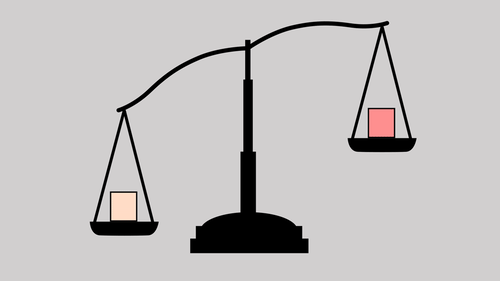Digital ads can be a very effective tool for your digital marketing strategy. But if you’re new to the game or have limited practice in setting your budget, you may find yourself wondering if you should go all in or just dip your toes.
Before you dive in head first, there are a few important things to consider for setting your budget: your business goals, your current marketing budget and your team’s capacity.
Follow these three steps to use those goals, marketing budget and team capacity to determine the amount that’s best for your business.
Step 1: Determine Your Marketing Goals
The first step to determining any kind of budget is to know what you’re putting all your money toward in the long run. Of course, you’ll want to grow your business. But in marketing, it’s not enough to just push money at a single campaign and wait for the phones to start ringing. Your goals can dictate your budget and vice versa. Do you:
- Want to spread brand awareness about your business?
- Increase your website’s conversion rate?
- Get more traffic to your website?
These goals might sound high-level — and they are, to an extent — but they can directly dictate your strategy for your digital ad spend and budget. If you want to convert more visitors, for example, Google users tend to have more intent behind their searches. High user intent is good because it means users are likely to click on your ad, helping you determine what platforms are best for you to advertise on. Google would be a better investment for you than say, Instagram ads where user intent isn’t as high.

Step 2: Calculate Your ROI & CLV
Once you have your goals in mind, you need to do some math to determine your return on investment (ROI). Luckily, you don’t have to pull out loose-leaf paper or a calculator for this — we actually have a calculator of our own to help you figure out your potential ROI if you don’t know it already. Your marketing budget is usually a blend of different initiatives, which are all investments on their own.
If you already know what your average ROI is and your customers’ lifetime value (CLV), you’re ahead of the game. Since no one likes spending without a return, you’ll always want the magic ratio of 3:1 when it comes to CLV and customer acquisition cost (CAC). That means for every dollar you spend, you want to get three back. Spending dollars to make pennies doesn’t make much cents (if you’ll pardon our pun).
The handy part of this alphabet soup is that knowing your CLV, CAC and ROI can help you flesh out how much you can afford to spend on digital ads without tipping that magic ratio into dangerous territory.
So, for example, if it turns out you spend $250 on ads to gain a customer whose CLV is only $100, you need to do some adjusting on how you’re spending your money.

Step 3: Decide Where You’ll Spend
When you know what you want and how you stand to gain from your ad spend, you can turn your attention to where you’ll spend that money. Your goals can dictate the best platform for you to advertise on, and your budget can dictate how often you can advertise (or in the case of Google, what keywords you want to bid on). Some keywords are more competitive than others and may cost more if you want to run an ad.
If this sounds complicated, it’s because it can be — and it’s why businesses often turn to agencies for their digital advertising needs. Even with a dedicated marketer or marketing team, it can be challenging to stay on top of multiple ad campaigns, especially if you need to make adjustments. An agency can help you with Google ads and paid social with a dedicated team member watching your budget and spend. However, if you’re a one-man show, or have a small marketing team, you can still make the most of digital ads by creating campaigns with intent.
Beyond the platform you choose, you’ll need to know how often you want to advertise. If you’re advertising a one-off special sale or promotion for your business, you may want to only run ads for a week or however long the promotion is available for users to take action on. However, if you’re focusing on more long-term advertising, you may need to be more judicious about timing for ads.
You can also decide the best platform for your ad spend by using historical data to see where your website’s traffic originates. Google may net you highly qualified leads because of high user intent, whereas Facebook might give you less-qualified leads for your particular industry. It may take some experimenting to see where your digital ad dollar stretches the farthest.

Set a Budget That Makes Sense for Your Goals
When it comes to ad spend, set a budget that aligns with your goals. Every marketing budget is different, so you may end up adjusting your ad spend based on the results you see with your digital ads. The balance of CLV to CAC is important for any marketing campaign, but because ad spend can vary, you need to monitor your spending carefully. Data can help you determine how effective your digital ads are.
But if you still need help with digital ads or don’t have the time to closely monitor your daily spend, there are experts out there who can step in and manage your digital advertising campaigns for you.






